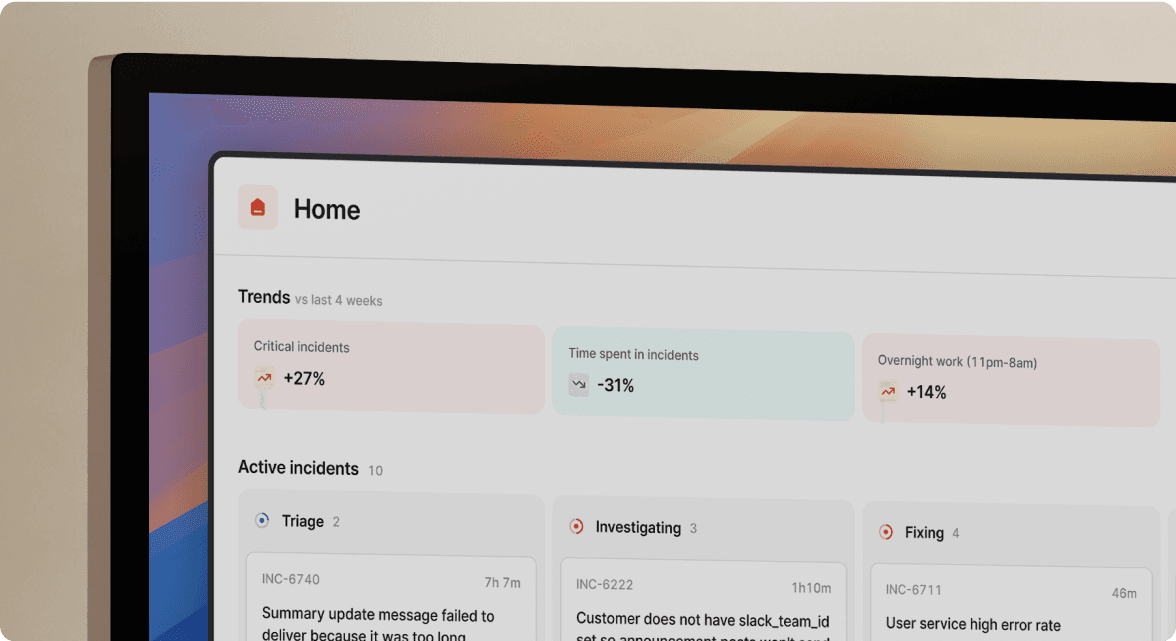Nudges
August 29, 2023

A nudge is a message that periodically reminds a responder to take action, at the right time. They're designed to remind you to follow your incident response process: for example, a nudge might prompt you to set a lead when there isn't one, or to provide an update if it's been quiet for a while.
These reminders help guide responders towards doing the right thing. They're also a great way to introduce best practices to newer responders.
Until now, you could only disable nudges — but now, you can change the frequency, edit the Slack message, and add conditions. We also let you add brand new nudges to go alongside the sensible defaults that we give you out-of-the-box.
Nudges are now much more powerful than before:
- We now support adding conditions to your nudges. If you want to disable a nudge for a particular severity, or prompt for more regular updates for a certain incident type, you can now do that.
- You can now customise the message that we send for a nudge, allowing you to provide some extra context on why the action you're asking your responders to perform is important. These messages support rich formatting, so you can add things like links, as well as insert variables.
- We now let you customise the schedule for a nudge. This includes being able to control the initial delay, the frequency with which they repeat, and the maximum number of times they're sent.
In addition to all of this, we've also tidied up how we send Slack messages: when we send a new nudge, we collapse old ones. Whenever you action a nudge (e.g. you set the lead), we'll make sure to remove any nudges that aren't relevant any more.
We've also introduced smart scheduling, which relaxes the schedule we use to send nudges to reduce noise — no more back to back messages.
🚀 What else we’ve shipped
Improvements
- The styling of incident filters now matches that of workflow conditions
- We’ve sped up the time between publishing a status page update and it being visible on your public page
- “Sign-in with Slack” can now be selected as a valid log-in option after setting up SAML SSO
- We now have a better support URL example when configuring your status page
- Exact matches now show up first when searching for items on catalog-backed fields
- The "incident updated" workflow now also fires when severity or status changes
- In the dashboard, any long URLs in incident summaries are now truncated
Bug fixes
- When you change the start of a query expression, we now clear out the sample values
- If you attempt to publish the same incident twice to a status page, we now show an error message
- Fixed an issue which caused the running of some workflows to be delayed
- You can’t escalate to stakeholder users in PagerDuty, so we now prevent that
- The catalog importer now handles boolean and numeric values correctly, when they are not strings
- Numeric custom field values can now be floats in the dashboard
So good, you’ll break things on purpose
Ready for modern incident management? Book a call with one of our experts today.

We’d love to talk to you about
- All-in-one incident management
- Our unmatched speed of deployment
- Why we’re loved by users and easily adopted
- How we work for the whole organization



